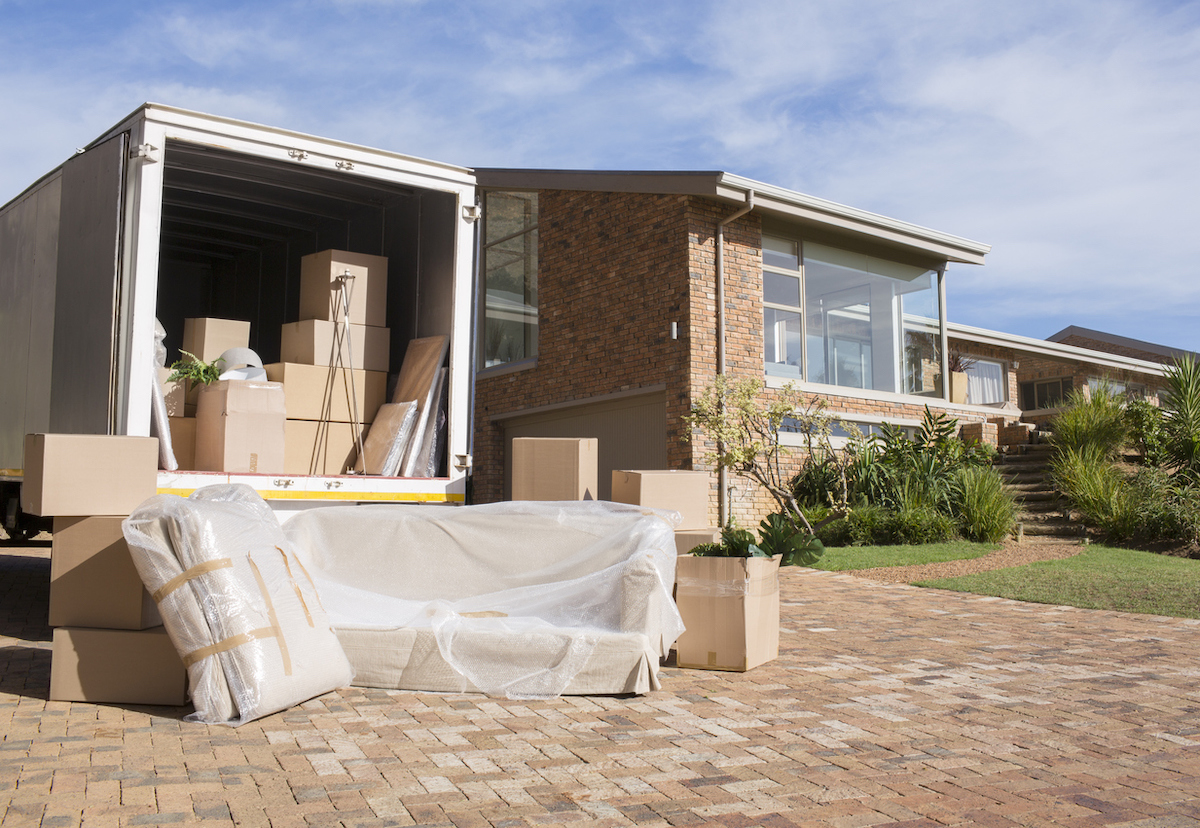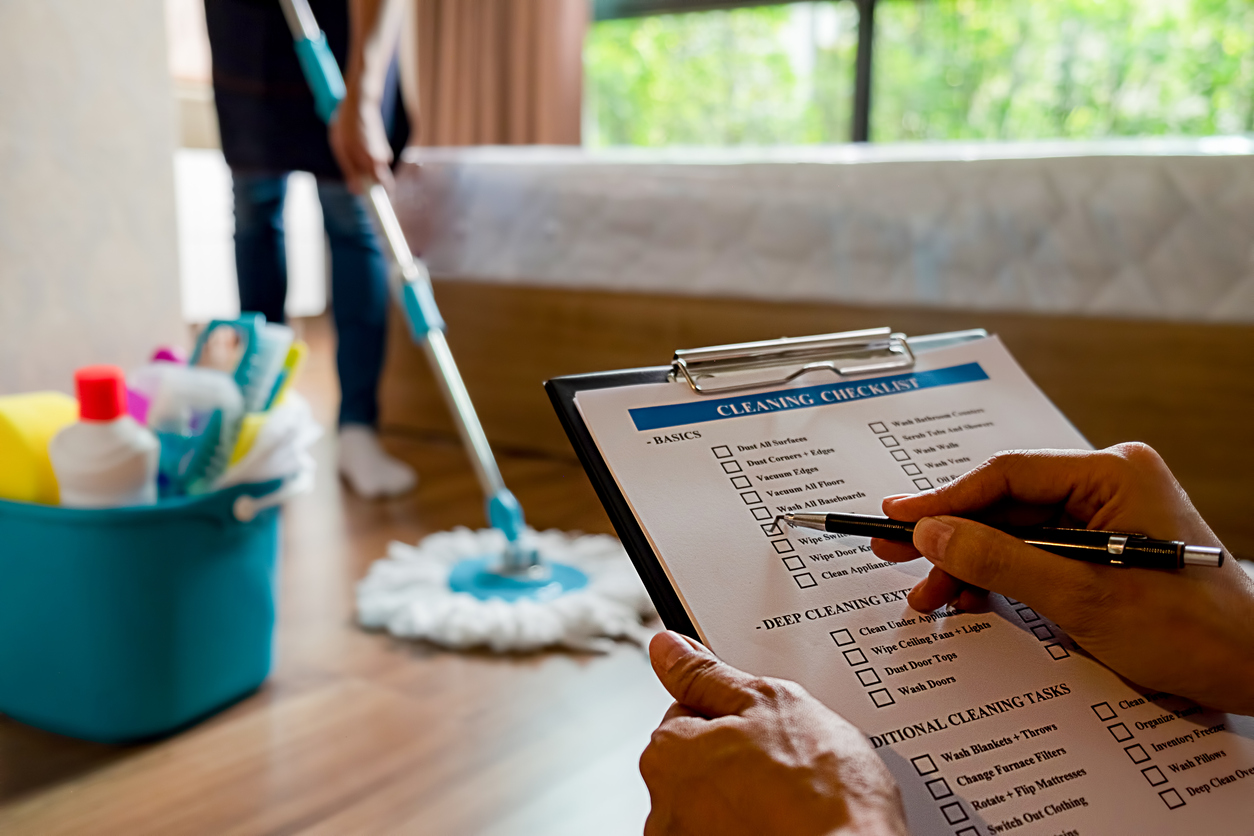

We may earn revenue from the products available on this page and participate in affiliate programs. Learn More ›
Moving to a new home is an exciting experience, but it can also be a stressful and overwhelming process. From packing up your belongings to organizing logistics and settling into your new space, there are countless tasks to manage and details to consider.
That’s where this comprehensive checklist for moving into a new house comes in—it’s designed to help you stay organized and on top of everything that needs to be done during every stage of your move. Whether you’re moving across town or across the country, this guide will provide you with helpful moving tips and practical advice to make your move as smooth and stress-free as possible.
RELATED: The 7 Best Moving Companies in America, Vetted
2 Months Before Moving Day
Two months before your moving day is the perfect time to start planning and preparing for your move. Here are some tasks to tackle during this phase:
- Create a budget: Create a budget for your move, taking into account moving expenses, deposits, and any unexpected costs.
- Research moving companies: Start researching moving companies and gather estimates from at least three different companies to compare prices and services offered.
- Sort and declutter: Go through your belongings and decide what to keep, donate, or throw away. This is also a good time to have a garage sale or start selling items online.
- Decide on a packing strategy: Consider whether you’ll be packing yourself or hiring a packing service, and make plans to hire one if necessary. Make a moving packing checklist to start the process.
- Acquire packing supplies: Purchase or accept from someone who’s moved recently all necessary packing supplies such as boxes, packing tape, bubble wrap, and packing paper.
- Start packing: Begin packing non-essential items such as seasonal clothing, books, and home decor.
- Make arrangements for specialty items: If you have specialty items such as a piano or valuable artwork, make arrangements for their transportation with your moving company or a specialty moving service.
- Research your new neighborhood: If you’re moving to a new area, research the neighborhood and nearby amenities such as schools, grocery stores, and healthcare facilities.

1 Month Before
As your move gets closer, it’s time to start tying up loose ends and finalizing important details. Here are some tasks to focus on one month before your move:
- Finalize your moving plans: Confirm the details of your move with your chosen moving company and make sure all necessary paperwork has been completed.
- Transfer your utilities: Contact your utility companies to arrange for the transfer or cancellation of your services.
- Notify important parties: Notify your banks, credit card companies, and other important parties of your upcoming move.
- Arrange for any necessary travel accommodations: Book hotels or flights if necessary for your move.
- Plan meals strategically: Starting to use up your food and pantry items a few weeks before your move can help to minimize your moving load and cut down on food waste.
- Plan for pets and plants: Make arrangements for the transportation of your pets and plants, and ensure pets are up to date with any necessary vaccinations or health certificates if they are being boarded at a facility.
- Plan for the disposal of hazardous materials: If you have hazardous materials such as paint, chemicals, or batteries, make arrangements for their disposal with your local waste management facility.
- Update your insurance: Contact your insurance company to update your homeowner’s or renter’s insurance policy for your new home.
- Pack infrequently used items: Pack infrequently used items such as holiday decorations, extra bedding, or kitchen appliances you don’t use often.
- Pack sentimental items: Take care to pack sentimental items such as family heirlooms, photo albums, or children’s artwork with extra care. Consider packing these items separately and keeping them with you during the move.

2 Weeks Before
With two weeks until your move, it’s time to start wrapping up your preparations and focusing on the logistics of moving day. Here are some tasks to tackle during this phase:
- Set up mail forwarding: Set up mail forwarding with the post office to ensure your mail is delivered to your new address.
- Confirm details with your moving company: Confirm the details of your move with your moving company, including the time of arrival.
- Begin disassembling furniture: Start disassembling large pieces of furniture and packing them up for transport.
- Gather important documents: Gather important documents such as passports, birth certificates, and medical records to keep with you during the move.
- Label boxes clearly: Label each box with its contents and room destination, and keep an inventory list of all boxes.
- Notify friends and family of your move: Let friends and family know about your upcoming move and provide them with your new address.
- Make parking arrangements: If you’re moving to a city or urban area, confirm parking arrangements for the moving truck with your building or the city.
- Confirm move-in details: If you’re moving into an apartment or condo, confirm the move-in details with your new building or landlord, including any necessary paperwork and the availability of elevators or loading docks.
- Pack outdoor items: Pack outdoor items such as gardening tools, patio furniture, and grills if you won’t be using them before the move.
- Pack hobby items: Pack hobby items such as craft supplies, sporting equipment, or musical instruments that you won’t need before the move.
- Set up Internet: Contact your internet provider or research new providers in your area to set up internet service in your new home
RELATED: Moving Container vs. Truck Rental: Which One is Better for Moving?

1 Week Before
With just one week until your move, it’s time to focus on finalizing your preparations and making sure everything is ready to go. Here are some tasks to focus on during this final stretch:
- Pack a “first-night” box: Pack a box with essentials such as toiletries, bedding, and a change of clothes for your first night in your new home.
- Clean your old home: Clean your old home thoroughly and complete any necessary repairs before leaving.
- Prepare your new home: If you already have the keys to your new home, make sure it’s clean and ready for move-in.
- Pack kitchen items: Pack your remaining kitchen items, such as dishes, glasses, and cookware, and label the boxes as fragile.
- Pack bedding and linens: Pack bedding and linens for each bedroom and label the boxes with the corresponding room.
- Pack electronics: Pack electronics such as computers, TVs, and gaming consoles, and make sure to keep all cords and cables organized.
- Drain fuel and oil: Drain fuel and oil from lawn mowers, snow blowers, and other gas-powered equipment before the move to prevent spills or damage.
- Return borrowed items: Return any borrowed items, such as library books or tools, to their rightful owners before the move.
- Make an inventory: Create a moving inventory of all of your belongings to keep track of what you’re moving and where it will go in your new home. This will help ensure that nothing gets lost or left behind during the move.

On Moving Day
It’s moving day! Here are some tasks to tackle to make sure everything goes smoothly:
- Do a final walkthrough: Walk through your old home to make sure that nothing has been left behind and that everything is clean and tidy.
- Pack up odds and ends: Before the movers arrive, pack up any remaining odds and ends, such as cleaning supplies and other items that were needed on the morning of the move.
- Check your inventory list: Make sure all boxes and furniture items are accounted for on your inventory list.
- Meet the movers: Be present to meet the movers when they arrive at your home on moving day. Introduce yourself and show them around your home, pointing out any fragile or valuable items that require special attention during the move. You should also provide the movers with any special instructions or requests you have, such as which boxes to load last or which items should be loaded first.
- Take photos of your old home: Take photos of your old home before you leave, especially if you’re renting or if you need to provide proof of the condition of the property.
- Supervise the unloading process: Be present to supervise the unloading process and provide direction to the movers as they bring your belongings into your new home.
- Direct furniture placement: Direct the placement of furniture and other large items in your new home to ensure that everything ends up in the right place.
- Celebrate your new home: Finally, take some time to celebrate your new home and the start of a new chapter in your life! Pop a bottle of champagne to mark the occasion.
RELATED: Moving Soon? 12 Essentials to Bring for the First Week in Your New Home

After Moving Day
After the movers have left and the boxes have been unpacked, there are still some important tasks to complete. Here’s a checklist of things to do after moving day:
- Unpack essentials: Unpack your essential items such as bedding, toiletries, and kitchen items first to make your new home feel more comfortable and functional.
- Check for damage: When you arrive at your new home, check your belongings for any damage that may have occurred during the move and report it to your moving company if necessary.
- Change your address: Change your address with the post office, banks, credit cards, and any other important organizations.
- Update your driver’s license and car registration: Update your driver’s license and car registration with your new address.
- Register to vote: Register to vote in your new area, if applicable.
- Dispose of packing materials: Dispose of packing materials such as boxes, packing paper, and bubble wrap in an environmentally friendly way.
- Check your new home’s security: Check your new home’s security features, such as door locks and smoke detectors, to ensure that they’re functioning properly.
- Meet your neighbors: Introduce yourself to your new neighbors and get to know the community.
- Find new service providers: Research and find new service providers, such as doctors, dentists, and hairstylists, in your new area.
- Explore your new area: Take some time to explore your new area and discover local attractions, parks, and restaurants.
Final Thoughts
Moving can be stressful, but with careful planning and organization, you can make the process smoother and more manageable. By following this moving guide and staying on top of tasks in the weeks leading up to your move, you can ensure that everything is in place for a successful transition to your new home. With a positive attitude and some patience, you’ll be able to make your new house feel like a home in no time!
